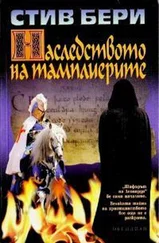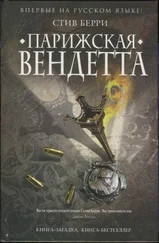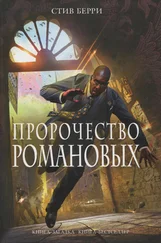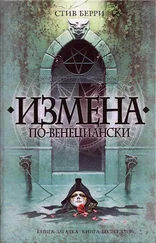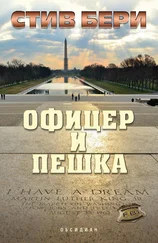A snarl seeped from the animal’s half-opened mouth.
Sharp canines came into view. Hind legs tensed.
She considered shooting the mountain lion, but really didn’t want to do that unless necessary. After all, she was the intruder here.
A shriek came from the front of the house. Not human. Animal. Then a series of low-pitched hisses and growls.
A gunshot echoed.
The puma leaped from the counter and bolted outside through the open kitchen door. She followed the animal with the muzzle of her gun, then rushed back to the front of the house.
Now she understood.
There were two local cats inside. Not unexpected considering the vacant house would provide excellent shelter.
Cotton was nowhere to be seen. She dashed to the archway leading into the parlor. Empty.
“Where are you?” she called out.
“Here,” came the reply.
She crept down the corridor, toward the study. In one of the bedrooms Cotton stood just inside the doorway.
“I chased the cat out the open window with a shot,” he said.
She nodded. “Mine left on his own.”
The room was sparsely furnished with a poster bed, no mattress, a small dresser, and a nightstand, all sheathed. Framed photographs dotted the walls. Grimy black-and-white images of varying sizes, all ravaged by time, the images grainy and overblown, the glass dust infected.
They studied them.
People and places from the area, as the foliage and mountains looked familiar. In one a man stood holding a small boy. Cotton found his phone and retrieved the images of Martin Bormann that Eisenhuth had supplied.
“That’s him,” he said. “No question.”
The boy couldn’t be more than two or three.
“It’s postwar, too,” Cotton added. “His appearance has changed.”
She compared the two images. On the phone Bormann was broad shouldered, stocky, knock-kneed, with thin strands of dark hair. A bit bloated, with a scar on the left cheek.
“The fleshy jowls are gone,” she said, pointing to the picture on the wall. “His physique is much thinner, the hair is still sparse but longer. But look. No scar on the left cheek.”
“Things like that could be fixed, even back then.”
Another of the framed photos showed a woman, her wavy hair long and dark. She wore a gathered skirt with a flowery print. Her thin chest was covered in a tight-fitting, short-sleeved blouse. A light-colored apron wrapped her waist. She had high cheekbones, a stiff brow, pencil eyebrows, and modest nose.
“That’s Eva Braun,” he said. “Her hair is longer and darker. The face is a bit worn, but it’s her. Postwar.”
He showed her an image of Braun at Hitler’s side on his phone.
“Not all that different,” she said.
The wall image was tight, revealing virtually nothing of the background, other than an outdoor scene with what appeared to be a wooden structure behind her.
A few of the other photos were similar. Bormann with the boy. Braun and Bormann together. None revealed much about their exact location, and there was nothing written on them, front or back, that offered any explanation as to time or place.
“This is what we were sent here to see,” he said.
She agreed.
A new sound disturbed the silence.
A car engine.
Grinding out its gears, coming closer.
They both headed for an open window. A pickup truck was plowing its way toward the house, through the tall grass, the chassis taking its share of bumps and grinds. It was too far away to make out much detail, but two men stood in the bed. It came no closer than thirty meters, where it turned hard right and stopped. Rifles appeared in the hands of the two men and shots were fired at the house, one shattering the window in the room next door.
They ducked for cover.
Before they could return fire, the truck roared back into the trees.
They rushed outside.
“Who the hell was that?” she asked.
“Good question.”
CHAPTER SIXTEEN
MUNICH, GERMANY
9:00 P.M.
Marie was tired but knew she could not let the audience sense her exhaustion. The day had been grueling. She’d given four speeches in different sectors of the city, then attended a huge rally at the municipal fairgrounds. She’d spent several hours there shaking hands. Dinner had been in the Schwabing, the district just north of the university, and now, in her final appearance of the day, she faced a young, intellectual crowd, eager to embrace an active debate.
“What dangers do you perceive from the new right?” The question came from a young woman with scraggly blond hair and a silver nose ring.
She faced the questioner. “Tell me, since the war has Germany ever seriously been threatened with a radical-right party?” She paused an instant as her rhetorical inquiry played across the audience’s minds. “No. We have not. Sure, there is an abundance of vitriolic dialogue, but the radical right is smeared with the same tar that consumed Hitler, and thankfully there is no way to escape that stench. It is a smell that tarnishes their message, but unfortunately it does not dissuade people from listening. So we must be vigilant in making sure that their message of hate does not take hold.”
“What of the violence?” another asked. “That’s more than rhetoric.”
She was ready with her response. “Before we reunified, radicals screamed that no one possessed the will, or the ability, to unify Germany but them. They were the answer to all our troubles. Then the people themselves brought about the downfall of the communists and an emergence of one Germany. The radical right had little to nothing to do with reunification. Now the new right has to react to something else. Something different. This is imperative, as they need hate to survive. So they channel anger toward immigrants and foreigners, blaming them for everything they claim is wrong with Germany. Those are the actions of cowards. Not patriots. Violence is the manifestation of their anger. It’s on the rise. Yes. But together we can stop it.”
She had to be careful with her words.
Bavaria was a Theodor Pohl bastion. The region had always leaned conservative. The embryonic Nazi Party was born not five kilometers away from where she stood. Local beer halls still proudly proclaimed Hitler’s former presence without any hint of guilt. Nuremberg, to the north, became a center of Nazi celebrations and the place where the odious race laws were eventually enacted. Her own opinion polls showed Pohl leading the state by a dozen percentage points, but she was determined to at least nibble away at that edge.
“Do you want this nation—our unified Germany—to again fall from grace?” she asked the crowd. “Don’t fool yourselves. Xenophobic feelings are clearly on the rise. Jewish cemeteries are disgraced weekly. Memorials at concentration camps have been defaced. Attacks on ethnic groups are increasing. Are we to allow terrorists to dominate our society? Is the world to know Germany by its hatred—or by its decency? Our country, this nation, is only as strong as the people’s commitment to peace and freedom.”
Heads began to bob in agreement.
The audience was far more receptive than she’d anticipated.
She glanced at the clock hanging in the rear of the hall. She’d been taking questions for nearly two hours, and her years in politics had certainly taught her when to shut up. So she thanked them, shook a few hands, then retreated to the street and a waiting car that took her across Munich.
“What about tomorrow?” an aide sitting across from her asked. “Still leery?”
“To say the least. What are the latest poll numbers?”
“Nationwide you have a 3-point lead. But the margin of error is 4 percent, so it’s still dead even.”
Читать дальше


